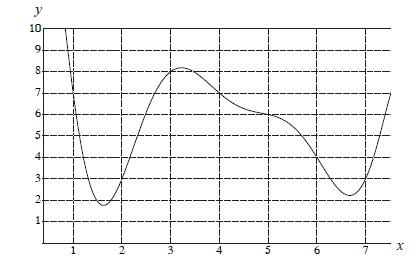Science:Math Exam Resources/Courses/MATH101/April 2013/Question 01 (a)
{{#incat:MER QGQ flag|{{#incat:MER QGH flag|{{#incat:MER QGS flag|}}}}}}
• Q1 (a) • Q1 (b) • Q1 (c) • Q2 (a) • Q2 (b) • Q2 (c) • Q3 (a) • Q3 (b) • Q3 (c) • Q4 (a) • Q4 (b) • Q5 (a) • Q5 (b) • Q6 (a) • Q6 (b) • Q7 (a) • Q7 (b) • Q8 • Q9 (a) • Q9 (b) • Q10 (a) • Q10 (b) • Q11 • Q12 (a) • Q12 (b) • Q12 (c) •
Question 01 (a) |
|---|
|
Short-Answer Questions. Question 1-3 are short-answer questions. Put your answer in the box provided. Simplify your answer as much as possible. Full Marks will be awarded for a correct answer placed in the box. Show your work, for part marks. Use the Trapezoidal Rule, with n = 4, to estimate the area under the graph between x = 2 and x = 6. Remember to simplify your answer completely. |
|
Make sure you understand the problem fully: What is the question asking you to do? Are there specific conditions or constraints that you should take note of? How will you know if your answer is correct from your work only? Can you rephrase the question in your own words in a way that makes sense to you? |
|
If you are stuck, check the hint below. Consider it for a while. Does it give you a new idea on how to approach the problem? If so, try it! |
Hint |
|---|
|
The Trapezoid Rule in full generality is
where
and
|
|
Checking a solution serves two purposes: helping you if, after having used the hint, you still are stuck on the problem; or if you have solved the problem and would like to check your work.
|
Solution |
|---|
|
We proceed as suggested by the hint. First notice that
Next, notice that
Thus, figuring out the terms directly from the graph, we have
|
{{#incat:MER CT flag||
}}







![{\displaystyle T_{4}={\frac {1}{2}}[3+(2)(8)+(2)(7)+(2)(6)+4]={\frac {49}{2}}}](https://wiki.ubc.ca/api/rest_v1/media/math/render/svg/b25a46be9f08066f7555dc8294b7ed5523aeede0)
